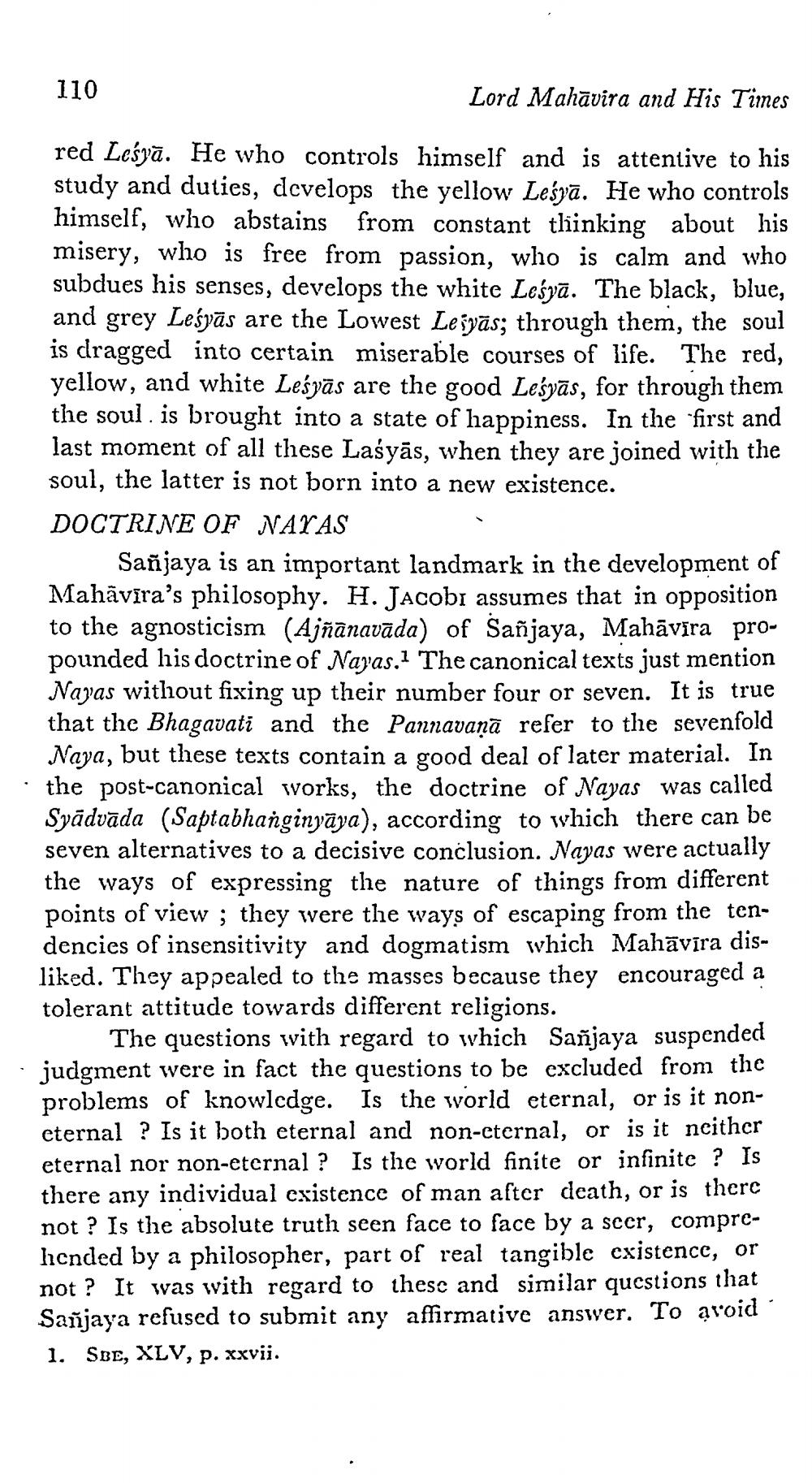________________
110
Lord Mahāvira and His Times
red Leśyā. He who controls himself and is attentive to his study and duties, develops the yellow Leśyā. He who controls himself, who abstains from constant tliinking about his misery, who is free from passion, who is calm and who subdues his senses, develops the white Lesya. The black, blue, and grey Leśyās are the Lowest Lesyās; through them, the soul is dragged into certain miserable courses of life. The red, yellow, and white Leśyās are the good Leśyās, for through them the soul is brought into a state of happiness. In the first and last moment of all these Laśyās, when they are joined with the soul, the latter is not born into a new existence. DOCTRINE OF NAYAS
Sanjaya is an important landmark in the development of Mahavira's philosophy. H. Jacobi assumes that in opposition to the agnosticism (Ajñānavāda) of Sañjaya, Mahāvīra propounded his doctrine of Nayas.1 The canonical texts just mention Nayas without fixing up their number four or seven. It is true that the Bhagavati and the Pannavanā refer to the sevenfold Naya, but these texts contain a good deal of later material. In the post-canonical works, the doctrine of Nayas was called Syādvāda (Saptabhanginyāya), according to which there can be seven alternatives to a decisive conclusion. Nayas were actually the ways of expressing the nature of things from different points of view ; they were the ways of escaping from the tendencies of insensitivity and dogmatism which Mahāvīra disliked. They appealed to the masses because they encouraged a tolerant attitude towards different religions.
The questions with regard to which Sañjaya suspended judgment were in fact the questions to be excluded from the problems of knowledge. Is the world eternal, or is it noneternal ? Is it both eternal and non-eternal, or is it neither eternal nor non-eternal ? Is the world finite or infinite ? Is there any individual existence of man after death, or is there not ? Is the absolute truth seen face to face by a scer, comprehended by a philosopher, part of real tangible existence, or not? It was with regard to these and similar questions that Sañjaya refused to submit any affirmative answer. To aroid 1. SBE, XLV, p. xxvii.




